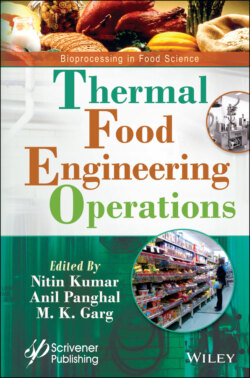Читать книгу Thermal Food Engineering Operations - NITIN KUMAR - Страница 39
2.3.1 Action Approach and Inactivation Targets
ОглавлениеDamage to cell structure or any type of physiological change can indicate the death of the cell. So, during the process of cell structure disruption, cell envelopes break, change the anatomy of DNA, alters the ribosome, and disintegrates the protein [29]. Whereas during the physiological change fluctuation of permeability in addition to the loss of enzyme functionality leads to death of the cell. So, during the inactivation process the above changes can occur solely or combinedly, and therefore, identifying the particular event becomes problematic for the researchers while coming across events in this area. Therefore, keeping in mind, the following situation, this can be possible to have multiple inactivation actions that combine to cause the death of the cell. It is likewise probable that the important aim solitary affected when a secondary structure is beforehand injured. For example, due to heat, there is nutrient loss, ions loss, the disintegration of DNA, denaturation of crucial proteins and enzymes [30]. Therefore, exactly capturing the real event of death of the cells becomes difficult as the structure of the cell is also affected by higher temperature. The only possible way to find out the exact reason is by examining the relation between inactivation degree and the modification dress of the targeted microorganism concerning various environmental conditions.
